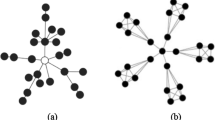Abstract
Recent location-based social networking sites are attractively providing us with a novel capability of monitoring massive crowd lifelogs in the real-world space. In particular, they make it easier to collect publicly shared crowd lifelogs in a large scale of geographic area reflecting the crowd’s daily lives and even more characterizing urban space through what they have in minds and how they behave in the space. In this paper, we challenge to analyze urban characteristics in terms of crowd behavior by utilizing crowd lifelogs in urban area over the social networking sites. In order to collect crowd behavioral data, we exploit the most famous microblogging site, Twitter, where a great deal of geo-tagged micro lifelogs emitted by massive crowds can be easily acquired. We first present a model to deal with crowds’ behavioral logs on the social network sites as a representing feature of urban space’s characteristics, which will be used to conduct crowd-based urban characterization. Based on this crowd behavioral feature, we will extract significant crowd behavioral patterns in a period of time. In the experiment, we conducted the urban characterization by extracting the crowd behavioral patterns and examined the relation between the regions of common crowd activity patterns and the major categories of local facilities.












Similar content being viewed by others
References
Mann S. wearcam.org: http://wearcam.org/eastcampusfire.htm
Bell G, Gemmell J (2009) Total recall: how the e-memory revolution will change everything. Penguin Group, USA
Twitter: http://twitter.com/
Foursquare: http://foursquare.com/
Gowalla: http://gowalla.com/
Calabrese F, Colonna M, Lovisolo P, Parata D, Ratti C (2011) Real-time urban monitoring using cell phones: a case study in rome. IEEE Trans Intell Transp Syst 12(1):141–151
Jiang B, Claramunt C, Batty M (2000) An integration of space syntax into GIS for modelling urban spaces. Int J Appl Earth Obs Geoinf 2(3–4):161–171
Social Graph: Concepts and Issues: http://www.readwriteweb.com/archives/social_graph_concepts_and_issues.php
Cudré-Mauroux P, Elnikety S (2011) Graph data management systems for new application domains. PVLDB 4(12):1510–1511
Cheng Z, Caverlee J, Lee K (2010) You are where you tweet: a content-based approach to geo-locating twitter users. In: Proceedings of the 19th ACM international conference on information and knowledge management, CIKM ’10, pp 759–768
Sysomos: Twitter Statistics for 2010: an in-depth report at Twitter’s Growth 2010, compared with 2009: http://www.sysomos.com/insidetwitter/twitter-stats-2010/
Barkhuus L, Brown B, Bell M, Sherwood S, Hall M, Chalmers M (2008) From awareness to repartee: sharing location within social groups. In: Proceedings of the twenty-sixth annual SIGCHI conference on human factors in computing systems, CHI ’08, pp 497–506
Hightower J (2003) From position to place. In: Proceedings of the 2003 workshop on location-aware computing, part of the 2003 ubiquitous computing conference
Zheng VW, Zheng Y, Xie X, Yang Q (2010) Collaborative location and activity recommendations with GPS history data. In: Proceedings of the 19th international conference on World wide web, WWW ’10, pp 1029–1038
De Longueville B, Smith RS, Luraschi G (2009) “OMG, from here, I can see the flames!”: a use case of mining location based social networks to acquire spatio-temporal data on forest fires. In: Proceedings of the 2009 i nternational workshop on location based social networks, LBSN ’09, pp 73–80
Sakaki T, Okazaki M, Matsuo Y (2010) Earthquake shakes Twitter users: real-time event detection by social sensors. In: Proceedings of the 19th international conference on World wide web, WWW ’10, pp 851–860
Cheng Z, Caverlee J, Lee K, Sui DZ (2011) Exploring millions of footprints in location sharing services. In: Proceedings of fifth international AAAI conference on weblogs and social media, ICWSM ’11, pp 81–88
Lee R, Sumiya K (2010) Measuring geographical regularities of crowd behaviors for Twitter-based geo-social event detection. In: Proceedings of the 2nd ACM SIGSPATIAL international workshop on location bsased social networks, LBSN ’10, pp 1–10
Lee R, Wakamiya S, Sumiya K (2011) Discovery of unusual regional social activities using geo-tagged microblogs. World Wide Web (WWW) Special Issue on Mobile Services on the Web 14(4):321–349
Wakamiya S, Lee R, Sumiya K (2011) Crowd-powered TV viewing rates: measuring relevancy between tweets and TV programs. In: Proceedings of the 2nd international workshop on social networks and social media mining on the web, SNSMW’11, pp 390–401
Wakamiya S, Lee R, Sumiya K (2011) Towards better TV viewing rates: exploiting crowd’s media life logs over Twitter for TV rating. In: Proceedings of the 5th international conference on ubiquitous information management and communication, ICUIMC ’11, pp 39:1–39:10
Lynch K (1960) The image of the city. The MIT Press, Cambridge
Tezuka T, Lee R, Takakura H, Kambayashi Y (2001) Models for conceptual geographical prepositions based on web resources. J Geogr Inf Decis Anal 5(2):83–94
Tezuka T, Lee R, Takakura H, Kambayashi Y (2003) Cognitive characterization of geographic objects based on spatial descriptions in web resources. In: Proceedings of the workshop on spatial data and geographic information systems (SpaDaGIS)
Facebook: http://www.facebook.com/
Twitter Open API: http://apiwiki.twitter.com/Twitter-Search-API-Method%3A-search
Google Geocoding API: http://code.google.com/intl/ja/apis/maps/documentation/geocoding/
Baddeley A (2010) Analysing spatial point patterns in R. CSIRO
Byers S, Raftery A (1998) Nearest-neighbour clutter removal for estimating features in spatial point processes. J Am Stat Assoc 93:577–584
Dempster AP, Laird N, Rubin D (1977) Maximum likelihood from incomplete data via the EM algorithm. J R Stat Soc Ser R 39(1):1–38
Berg MD, Cheong O, Kreveld MV, Overmars M (2008) Computational geometry: algorithms and applications, third edition. Springer, Berlin
Lloyd SP (1982) Least squares quantization in PCM. IEEE Trans Inf Theory 28(2):129–137
Yu JX, Li Z, Liu G (2008) A data mining proxy approach for efficient frequent itemset mining. VLDB J 17:947–970
Yahoo! Local Search Web API: http://developer.yahoo.co.jp/webapi/map/localsearch/v1/localsearch.html
Japan Standard Industry Classification: http://www.stat.go.jp/english/index/seido/sangyo/san07-2.htm
Acknowledgments
This research was supported in part by the 7th Microsoft Research IJARC Core Project.
Author information
Authors and Affiliations
Corresponding author
Rights and permissions
About this article
Cite this article
Lee, R., Wakamiya, S. & Sumiya, K. Urban area characterization based on crowd behavioral lifelogs over Twitter. Pers Ubiquit Comput 17, 605–620 (2013). https://doi.org/10.1007/s00779-012-0510-9
Received:
Accepted:
Published:
Issue Date:
DOI: https://doi.org/10.1007/s00779-012-0510-9




